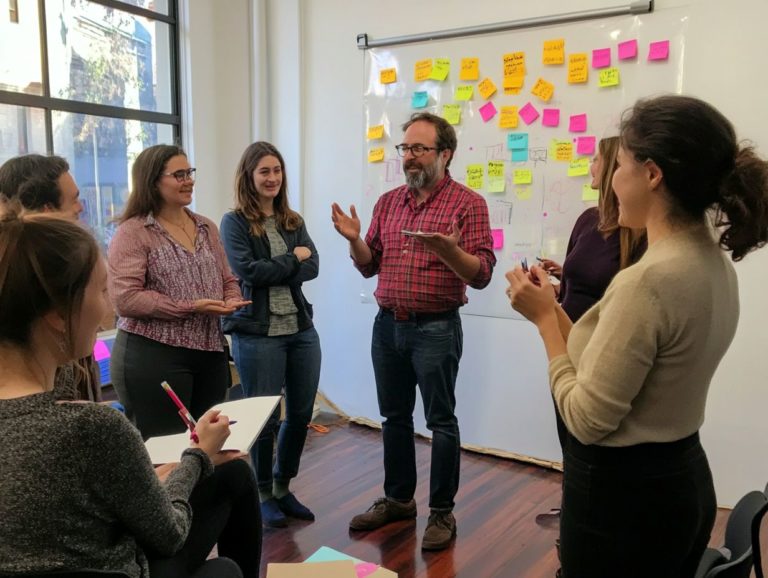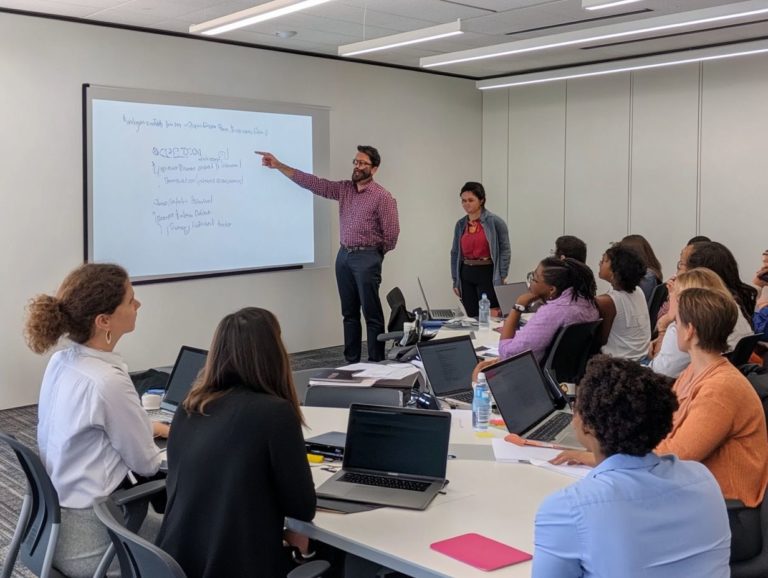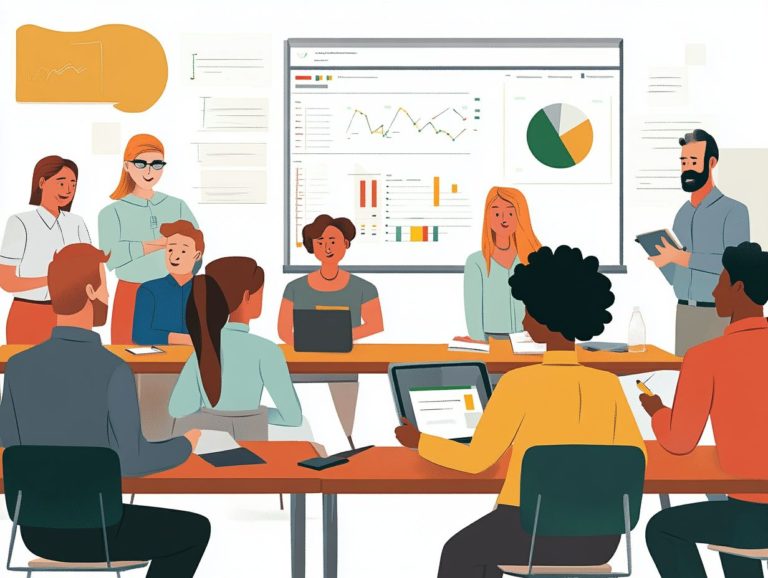How to Create Effective Training Materials?
Creating effective training materials is essential for nurturing learning and development within your organization. This article delves into the fundamental components of training materials, beginning with their definition and purpose.
You ll learn how to assess training needs, design engaging content, and integrate interactive elements that captivate your audience. We will also discuss various delivery methods to ensure the material resonates with your learners.
We will also discuss techniques for evaluating the effectiveness of your training, enabling you to make informed enhancements for future sessions. Let s jump in and transform your training strategies today!
Contents
- Key Insights:
- Understanding Training Materials
- Identifying Training Needs
- Designing Training Materials
- Creating Engaging Content
- Delivering Training Materials
- Evaluating Training Effectiveness
- Frequently Asked Questions
- What are the key components of creating effective training materials?
- How can I make sure my training materials are engaging and memorable?
- Is it better to create training materials from scratch or use existing templates?
- How important is it to tailor training materials for different learning styles?
- What role do reference materials play in creating effective training materials?
- How can I ensure that my training materials are effective in achieving the desired learning outcomes?
Key Insights:

- Identify the purpose and target audience of your training materials to ensure their effectiveness.
- Conduct a thorough needs assessment to identify the specific skills and knowledge to be addressed in the training.
- Use engaging and interactive tools, such as visual aids, to create effective and memorable training materials.
Understanding Training Materials
Understanding training materials is essential for crafting effective training programs that elevate learner engagement and ensure lasting knowledge retention. To achieve this, it’s important to consider the key elements of effective training.
These materials can include everything from plans for creating effective training materials to resources that use multiple forms of media tailored to the unique needs of different audiences. Corporate trainers and instructional designers play a crucial role in this process, curating content that aligns with defined learning objectives and employing various delivery methods, such as online courses and blended learning approaches.
By considering the needs of employees and the specific goals of training initiatives, organizations can fine-tune their training programs to achieve superior results.
Definition and Purpose
Training materials are essential resources crafted to enhance your learning experience and maximize the effectiveness of employee training programs, ensuring that your learning objectives are achieved.
These materials are crucial in instructional design, offering structured content that expertly guides you through the training process. By leveraging various formats such as online courses and engaging training videos these resources cater to diverse learning styles and preferences, ultimately enhancing your retention and satisfaction.
Well-designed training materials focus on specific learning objectives, equipping you with the skills and knowledge needed to excel in your role. This approach boosts your engagement and creates a more interactive learning environment, where you feel encouraged to participate, ask questions, and apply what you’ve learned in real-world contexts.
Identifying Training Needs
Identifying training needs is a crucial first step in crafting effective training programs that enhance employee engagement and drive performance improvement. By conducting a thorough training needs assessment, you can pinpoint specific gaps in skills and knowledge that need addressing.
This assessment involves analyzing existing competencies, understanding your audience’s needs, and aligning training objectives with your organizational goals. With robust feedback mechanisms in place, you can ensure that your training initiatives remain responsive to the evolving requirements of your workforce.
Conducting a Training Needs Assessment
Conducting a training needs assessment requires evaluating current skills and pinpointing training gaps, all to align employee development with your organization’s goals.
This process typically begins with data gathering using methods such as surveys to capture employee perceptions and interviews to gain deeper insights. Analyzing performance metrics can reveal areas needing improvement. Once you have collected this information, employing feedback mechanisms is essential to refine your training objectives.
By continually assessing the effectiveness of the training, you can adapt your approaches, ensuring that knowledge retention is maximized and aligns seamlessly with both employee aspirations and strategic goals.
Designing Training Materials
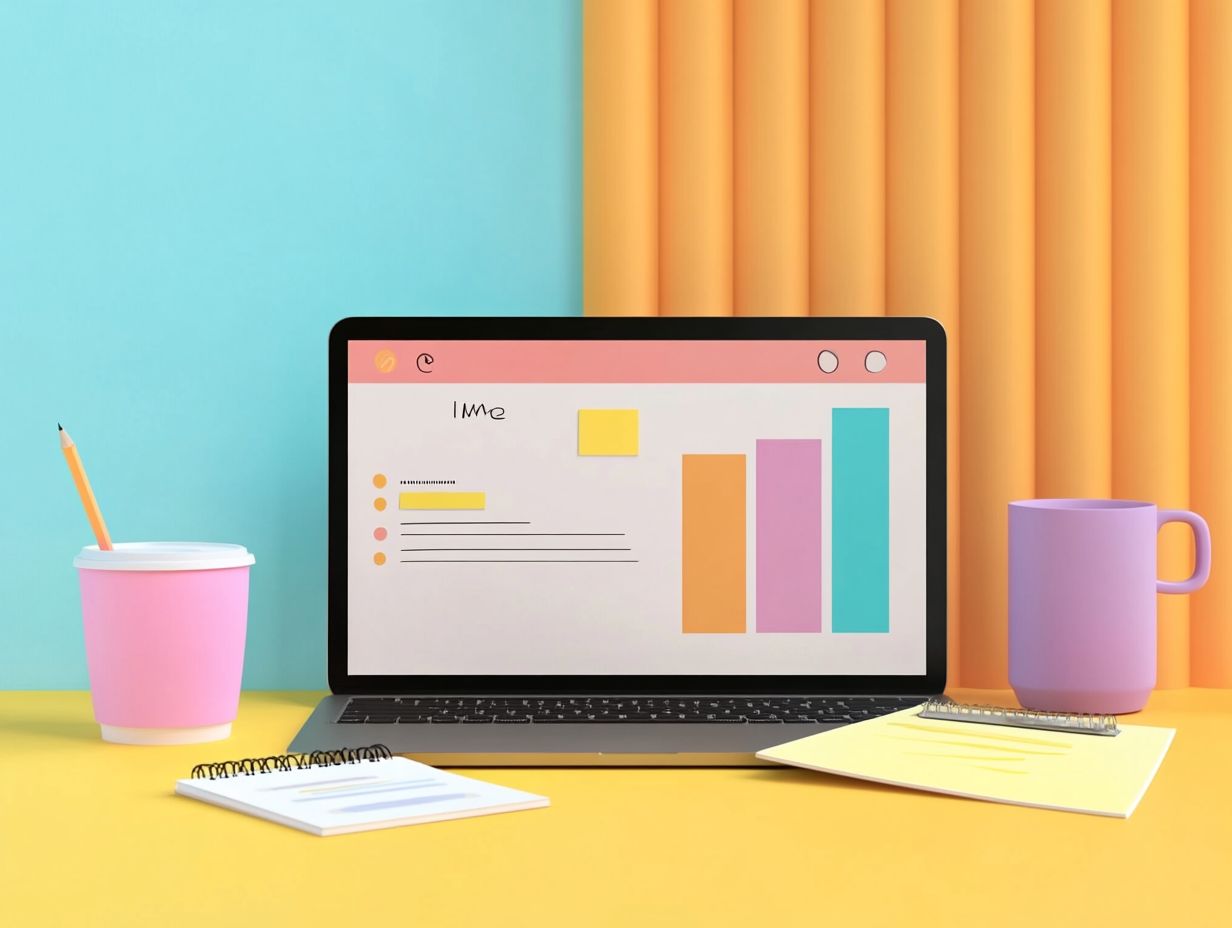
Designing training materials requires careful planning to ensure that every resource aligns with your learning objectives. This process involves thoughtful consideration of the course development stages, from identifying key components to structuring content for optimal learner engagement.
Utilizing various teaching methods and delivery formats like eLearning courses and immersive role-play simulations can help you create user-friendly materials that facilitate knowledge retention and generate impactful learning experiences.
Incorporating feedback mechanisms and robust assessment plans during this phase will further elevate your training outcomes.
Key Components and Considerations
- Clear objectives
- Relevant content
- Suitable delivery methods
These components are crucial as they establish a solid foundation for structured learning. Clear objectives enable learners to focus on what they need to accomplish by the end of the course, highlighting essential takeaways.
Relevant content ensures a connection to real-world applications, boosting both relatability and retention. Various delivery methods such as interactive workshops, e-learning modules, and hands-on simulations address diverse learning preferences, making training more accessible.
Integrating these approaches fosters increased participation, leading to significant enhancements in understanding and performance outcomes.
Creating Engaging Content
Creating engaging content is key to sparking interest and excitement in your training! It fosters learner engagement and boosts knowledge retention through various strategies, including visual aids and interactive elements.
Embracing short, focused learning sessions allows you to design training exercises that are not just informative but also stimulating and relevant to your audience.
Using a diverse array of multimedia resources like training videos, interactive pages, and quizzes can elevate the learning experience even further.
Each element should align with your learning objectives and training assessments, ensuring a cohesive educational journey for your participants.
Using Visual Aids and Interactive Elements
Incorporating visual aids and interactive elements significantly boosts learner engagement and enhances knowledge retention by making complex concepts more accessible.
These tools can take many forms such as infographics, charts, and videos distilling challenging information into easily digestible pieces. Adding interactive elements like quizzes, polls, or simulations invites learners to actively engage in their education, reinforcing their understanding and fostering critical thinking.
For example, a video demonstration followed by a quiz ensures that concepts are grasped and helps them stick in the mind. Including multimedia resources like animations vividly illustrates processes that text alone struggles to convey, enriching the training experience with both value and variety.
Delivering Training Materials
Effective delivery of training materials is essential for enhancing your understanding and retention. Various delivery methods such as online courses, blended learning, and traditional classroom settings offer unique advantages that can be customized to meet your needs.
Leveraging a learning management system (LMS), a tool for delivering and tracking online training, allows corporate trainers to streamline the delivery process, monitor engagement, and tailor content to boost overall effectiveness. A strategic approach to delivery maximizes interaction and fosters continuous improvement in training programs.
Effective Delivery Methods and Techniques
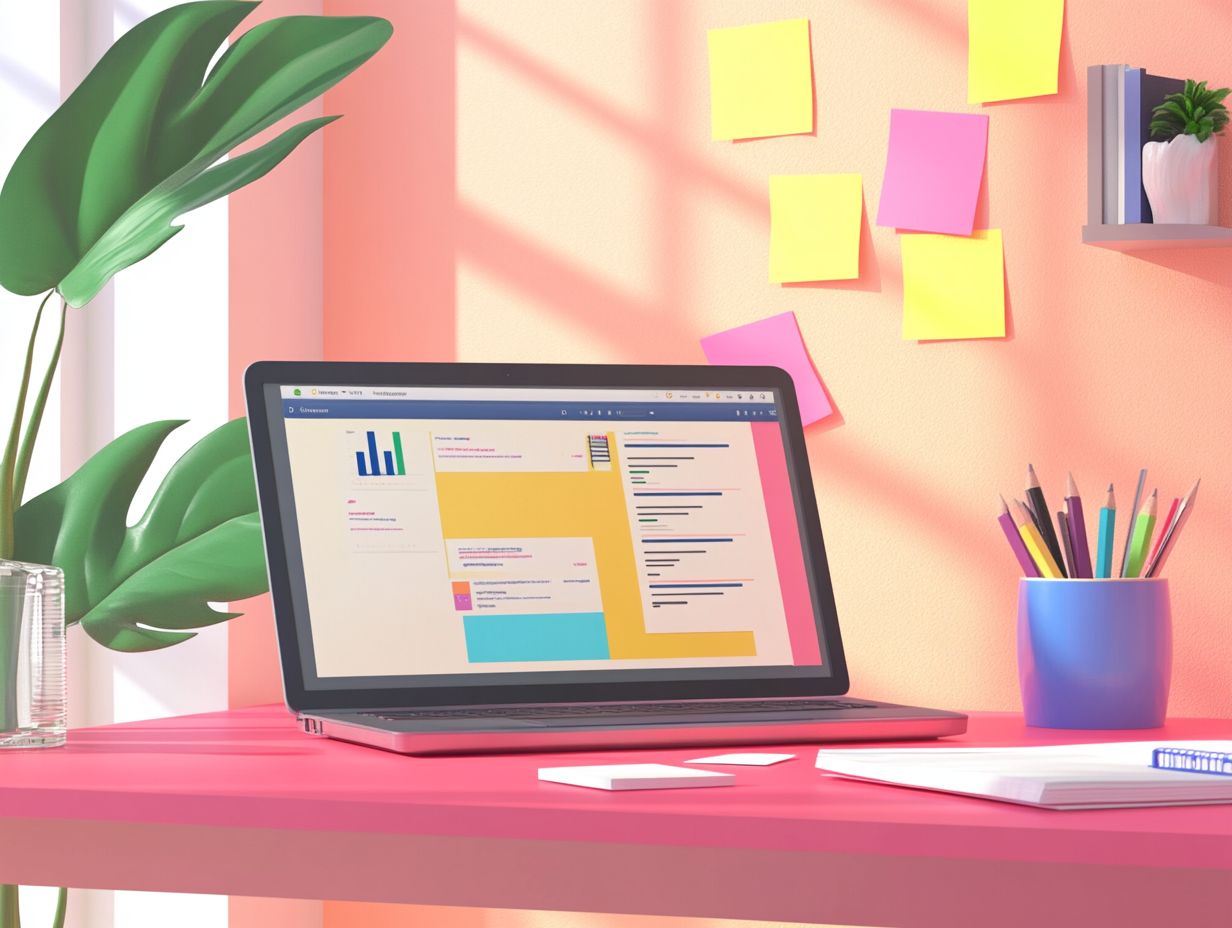
Effective delivery methods and techniques are vital for engaging learners and optimizing the learning experience through training materials.
By blending traditional in-person teaching and online learning, organizations can cater to diverse learning preferences and schedules. This significantly enhances engagement. For example, blended learning merges face-to-face interactions with online modules, allowing learners to learn at their own pace while still benefiting from direct support.
Digital learning platforms can include interactive elements like quizzes and gamified content, transforming training into an enjoyable experience that keeps motivation high. It s essential to align training objectives with clear metrics for success, ensuring that learners not only absorb knowledge but also apply it effectively in their roles.
Evaluating Training Effectiveness
Evaluating training effectiveness is essential for measuring learning outcomes and ensuring that training programs achieve their intended goals. Thoughtfully designed assessments and feedback mechanisms gather valuable insights into the strengths and weaknesses of training initiatives.
Establishing clear performance metrics allows organizations to continuously refine their programs. Addressing any gaps enhances the overall effectiveness of employee training. Regular evaluations keep training fresh and effective, ensuring it remains relevant and responsive to the evolving needs of the workforce.
Measuring Learning Outcomes and Making Improvements
Measuring learning outcomes is crucial for evaluating the effectiveness of training programs and identifying areas for performance enhancement.
Methods can include crafting a comprehensive assessment plan that specifies clear criteria and benchmarks. Techniques like formative assessments, pre-and post-tests, and learner feedback surveys gather invaluable data on participants’ knowledge and skill development.
By analyzing this data, organizations can uncover trends and gaps in understanding, enabling informed adjustments to training initiatives. This ongoing process not only ensures alignment with established learning objectives but also fosters a culture of continuous improvement among employees.
Frequently Asked Questions
What are the key components of creating effective training materials?
The key components include defining learning objectives, identifying the target audience, organizing content, using interactive elements, creating clear visuals, and providing opportunities for practice.
How can I make sure my training materials are engaging and memorable?

To make training materials engaging and memorable, use a variety of methods such as videos, case studies, and group discussions. Incorporate real-life examples and hands-on activities to make the material more relatable and memorable for learners.
Is it better to create training materials from scratch or use existing templates?
It depends on the content and target audience. If specific learning objectives and unique content are required, creating customized materials may be more effective. However, if the material is more general, using existing templates can save time and effort.
How important is it to tailor training materials for different learning styles?
It is crucial to consider different learning styles when creating training materials. Some learners may prefer visual or auditory methods, while others may thrive with hands-on activities. Catering to various learning styles ensures all learners can comprehend and retain the material effectively.
What role do reference materials play in creating effective training materials?
Reference materials are valuable tools for learners. They can include handouts, checklists, and job aids.
Using these resources reinforces the training content and serves as a handy reference for the future.
How can I ensure that my training materials are effective in achieving the desired learning outcomes?
Regular evaluations are key! They help you refine your materials and ensure learners achieve their goals.
Gathering feedback from learners allows you to make necessary adjustments and improve the training experience.

